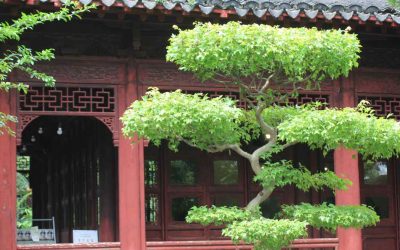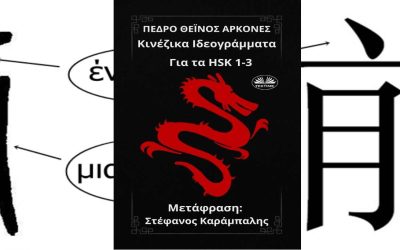How a Eunuch Was Created in 19th-Century China
A wealthy eunuch would purchase a boy from a poor family. This boy had to be between seven and ten years old. He would be kept confined for two weeks and subjected to a very strict diet; he ate little.
Use of Narcotics
This is the first stage of the operation and the essential preliminary for its success. When it is considered that he is sufficiently weakened and that inflammatory fever is only slightly feared, the second stage of the operation begins. A mixture, generally composed of ten plants considered specific—that is, with altering and narcotic properties—is used. We will refrain from describing them. Three times a day this mixture is poured over the parts and kept wrapped in a cloth soaked in the liquid. Around the fourth or fifth day, local numbness begins: the diet becomes less strict.
Gradual Twisting of the Genital Apparatus
Then comes the third stage of the operation. It consists of gradual twisting applied to the entire genital apparatus. Small scattered sores soon appear here and there, which gradually come closer together. A brownish coloration becomes generalized: the tone darkens more and more; the parts are about to detach. A final twist speeds up their fall, which occurs between the fifteenth and twentieth day.
Do you want faster results? Here’s what to do: As soon as the brown color appears, several silk threads are tied around the base of the genitals as a ligature. This accelerates the gangrene of the parts, which detach between the fourteenth and sixteenth day.
Minimal Liquid Intake
During the operation, care is taken to ensure that the boy consumes as little as possible of any aphrodisiac drinks, since beverages and water are almost entirely eliminated, so that urination, increasingly scarce, does not obstruct the progress of the removal nor cause infiltrations that could lead to serious complications. Thus, we see that everything is planned, carried out with caution, and, in most cases, crowned with resounding success. Once the separation is complete, it is enough to bandage the wound. A hemostatic powder accelerates healing.
Scar Formation
Little by little, cleanliness is maintained, and by the second month, all that remains in place of the parts is a scar—more regular the better the precautions have been observed and the operator’s hand has skillfully directed each stage of the work. This regularity of the wound is an important point that greatly influences the perceived value of the “product,” along with other physical qualities. As for intellectual qualities, they are developed through education, the arts of pleasure, good manners, etc.
High Price
In China, eunuchs correspond to the category of Roman castrati—that is, they are deprived of all their organs, except that the ablation never reaches the root of the penis, and there is no incontinence. A eunuch reaches quite a high price, ranging from 100 to 200 taels, depending on local beauty and other physical and intellectual qualities.
Translated from: Martin, Ernest. Étude sur la prostitution en Chine. Gazette hebdomadaire de médecine et de chirurgie. série 2, tome 09. – Paris : G. Masson, 1872.
About me: I have spent 30 years in China, much of the time traveling and studying this country’s culture. My most popular research focuses on Chinese characters (Chinese Characters: An Easy Learning Method Based on Their Etymology and Evolution), Matriarchy in China (there is a book with this title), and minority cultures (The Naxi of Southwest China). In my travels, I have specialized in Yunnan, Tibet, the Silk Road, and other lesser-known places. Feel free to write to me if you’re planning a trip to China. The agency I collaborate with offers excellent service at an unbeatable price. You’ll find my email below.
Last posts
The Primitivist: The Taoist Philosopher of Simplicity
The Primitivist: The Taoist Philosopher of Simplicity The Taoist classic Zhuangzi is not the work of a single philosopherAnyone who takes a closer look at the foundational works of Taoism will quickly discover that the book known as Zhuangzi was not entirely written...
Zhang Yongzheng, the master of deluding reality
Zhang Yongzheng, the master of deluding reality Reality is an illusion, say Buddhist texts. And each of Zhang Yonggzheng's (Gansu, 1978) works plays with this concept to remind us again and again that there is no immutable reality but a fluid universe of forms that...
The book Hanzi for HSK 1-3 now available in Greek language
The book “Hanzi for HSK 1-3” now available in Greek language This April, the translation of my book Hanzi for HSK 1-3 has been published in the main digital bookstores in Greece. The Greek version of this book, from the pen of Stefanos Karampalis, has been one of...
Portrait of a Mandarin in 1800
Portrait of a Mandarin in 1800 This was the year in which a very interesting book was published, which through 60 portraits, tried to show some aspects of life in China to the western public. A book now in the public domain, from which we adapted "A Mandarin of...
The art of laying out gardens among the Chinese
The art of laying out gardens among the Chinese In the 1740s, William Chambers travelled on three trading voyages to China with the Swedish East India Company. He was the first European to study Chinese architecture methodically. In a book published in 1757, Designs...
The secret treasure of ancient Chinese art
The secret treasure of ancient Chinese art China has a fabulous artistic treasure hidden from the eyes of the public and specialists. It is her best kept treasure, because given the dispersion of its location, the difficulty of conservation and even evaluation and...










